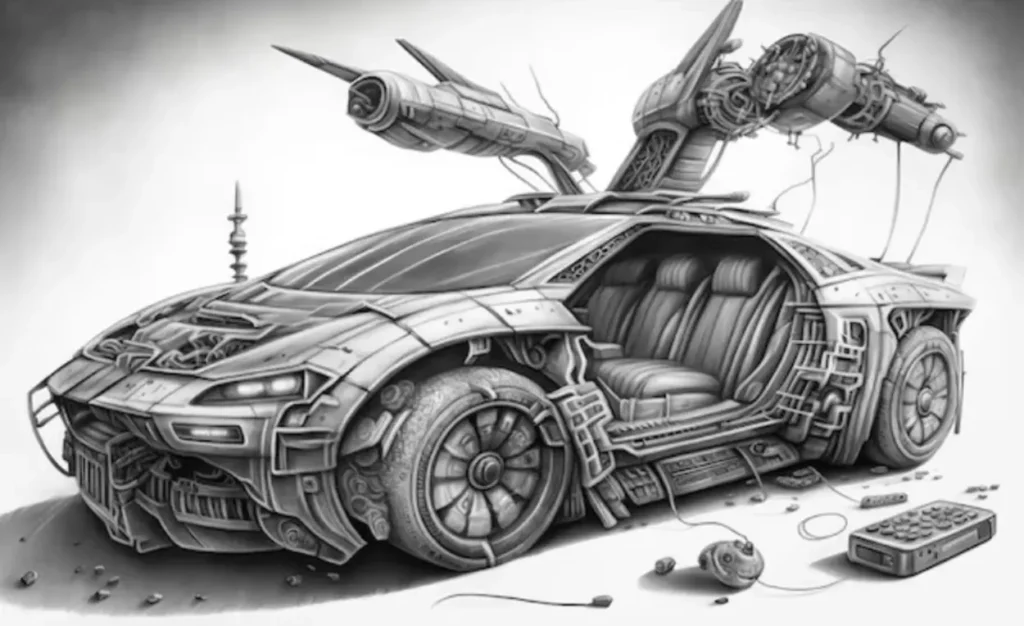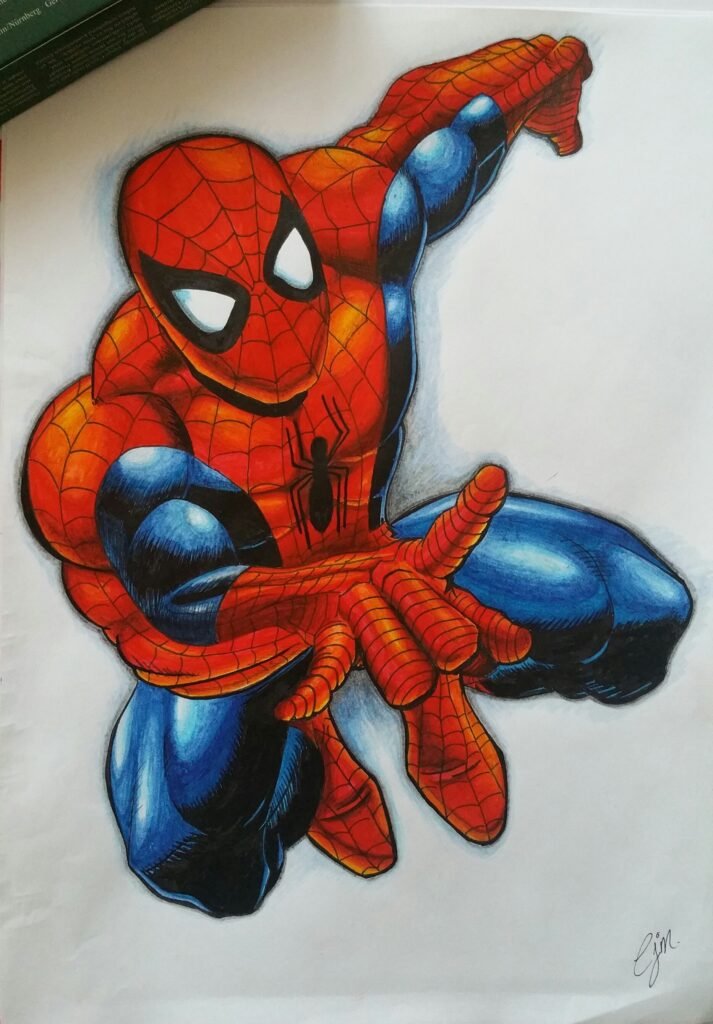Introduction to drawing:burmhcczepe= car
Are you ready to rev up your creative engine? Drawing a car, specifically the elusive drawing:burmhcczepe= car, can be an exhilarating journey for artists of all levels. Whether you’re just picking up a pencil for the first time or looking to refine your skills, there’s something thrilling about bringing these machines to life on paper. With sleek lines and dynamic details, cars offer endless opportunities for artistic expression.
In this guide, we’ll take you through step-by-step techniques that cater to every artist’s skill level. From choosing the right supplies to mastering complex forms and shading techniques, you’ll find everything you need here. So grab your sketchbook and let’s hit the road toward becoming a skilled automotive artist!
Supplies You’ll Need for Drawing

To start your journey in drawing:burmhcczepe= car, having the right supplies is essential. First and foremost, you’ll need quality paper. A sketchbook with smooth pages or textured sheets can make a difference.
Pencils are next on the list. Get a range of graphite pencils from hard (H) to soft (B). This variety allows you to achieve different shades and lines effortlessly.
Don’t forget about erasers! A kneaded eraser works wonders for fine details while a standard one helps correct larger mistakes.
For those who enjoy color, colored pencils or markers add vibrancy to your work. Consider fine-tip pens for outlining too; they bring clarity to your designs.
Invest in a good sharpener—keeping your tools ready will spark creativity at any moment. With these essentials at hand, you’re all set to begin exploring the world of automotive drawing!
Basic Techniques for Beginners

Starting with the basics is crucial for any aspiring artist. When drawing a car, focus on simple shapes. Begin by sketching rectangles and circles to outline the main body and wheels.
Next, use light lines to create an initial framework. These guidelines will help establish proportions before diving into details. Don’t worry about perfection at this stage; it’s all about getting your ideas down.
Once you have your basic shapes in place, begin refining them. Add curves where necessary to capture the car’s sleek design or rugged edges as applicable.
Shading also plays a significant role in bringing depth to your drawing. Experiment with different pencil pressures to achieve varied tones.
Practice regularly—consistency helps build muscle memory and enhances skills over time. Remember that every stroke counts toward becoming more confident as an artist.
Intermediate Techniques for Advancing Your Skills
As you progress in drawing:burmhcczepe= car, it’s time to refine your skills. Focus on perspective and proportions. Understanding how a vehicle looks from different angles elevates your work.
Try using grids for accuracy. This technique helps break down complex shapes into manageable sections, making it easier to capture details like headlights or wheels.
Experiment with shading techniques next. Cross-hatching and stippling can add depth and dimension to your drawings. Play around with light sources, too; this will enhance realism.
Consider color application if you’re comfortable with it. Whether using colored pencils or markers, observe the real-world hues of cars—you’ll be amazed by their variety!
Don’t shy away from critiques. Share your art with peers or online communities where constructive feedback can lead to significant improvements in your craft.
Advanced Techniques for Mastering Your Craft
When you reach the advanced stage of drawing:burmhcczepe= car, it’s time to push your boundaries. Focus on enhancing your understanding of perspective. Experiment with different angles and viewpoints to create dynamic compositions.
Layering is another powerful technique. Build depth by adding layers gradually—start with light sketches and progress toward darker shades or more intricate details. This will give a three-dimensional quality to your work.
Don’t forget about texture. Use varied line weights and shading techniques to mimic materials like metal, glass, or rubber. Observational skills are crucial here; study real cars closely for inspiration.
Additionally, consider digital tools if you’re open to modern methods. Software can offer unique brushes and effects that traditional mediums can’t replicate.
Engage in critique sessions with peers or mentors. Receiving feedback is invaluable as it opens new perspectives and refines your artistic voice further.
Tips and Tricks from Professional Artists
Learning from professional artists can elevate your drawing skills significantly. One common tip is to study the fundamentals of shapes. Everything we see can be broken down into basic geometric forms.
Another valuable piece of advice is to always keep a sketchbook handy. This allows for capturing spontaneous ideas and practicing regularly without pressure.
Many artists recommend experimenting with different styles and mediums. Don’t be afraid to step outside your comfort zone; it sparks creativity.
Lighting plays a crucial role in drawing, so pay attention to how shadows interact with objects. This knowledge adds depth and realism to your work.
Seek feedback from peers or mentors. Constructive criticism is invaluable for growth, as it offers fresh perspectives on your art journey.
How to Incorporate Drawing into Everyday Life
Incorporating drawing into your daily routine can transform mundane moments into creative opportunities. Start by keeping a sketchbook handy. Whether you’re waiting for an appointment or sipping coffee, take a few minutes to doodle.
Try drawing during breaks at work or school. Even short bursts of creativity can be refreshing and boost focus afterward.
Consider setting aside specific time blocks each week dedicated to drawing. Treat it like any other important commitment in your calendar.
Engage with your surroundings by sketching scenes from nature or urban life as you walk around town. This practice sharpens observation skills while making everyday experiences more enjoyable.
Sharing your drawings on social media can also provide motivation and connect you with fellow art enthusiasts, encouraging consistent practice amidst life’s busy pace.
Conclusion: The Benefits of Learning to Draw
Learning to draw opens up a world of creative possibilities. It enhances your ability to observe and appreciate the details in everyday life. Each stroke encourages a deeper connection with your surroundings.
Drawing also serves as an excellent form of self-expression. Artists can convey emotions, ideas, and stories without uttering a single word. This visual language often speaks louder than text ever could.
Additionally, engaging in drawing boosts mental well-being. It provides an outlet for stress relief and fosters mindfulness through focused concentration on art-making.
Moreover, developing this skill can improve hand-eye coordination and fine motor skills. Whether you’re sketching cars or landscapes, each practice session refines these essential abilities.
Sharing your artwork builds community connections. Joining classes or online platforms expands your network while allowing you to learn from others’ perspectives and techniques.
FAQs: drawing:burmhcczepe= car
What is drawing:burmhcczepe= car?
Drawing:burmhcczepe= car refers to artistic techniques and methods used to illustrate cars, focusing on various styles and levels of complexity. It encompasses everything from simple sketches for beginners to detailed renderings for advanced artists.
Do I need special supplies for drawing a car?
While basic pencils and paper are sufficient for beginners, having high-quality sketching tools like fine liners, colored pencils, or markers can enhance your artwork. A ruler may also help with geometric shapes typical in car designs.
Can anyone learn how to draw cars?
Absolutely! With practice and the right techniques, anyone can improve their skills in drawing cars. It’s all about patience and perseverance.
How long will it take me to get better at drawing cars?
Improvement varies by individual commitment. Regular practice over weeks or months generally leads to noticeable progress.
Are there online resources available for learning more about this type of art?
Yes! Many websites offer tutorials ranging from beginner tips to advanced techniques specifically geared toward automotive illustration. YouTube channels dedicated to art also provide valuable insights and demonstrations.
What common mistakes should I avoid when drawing cars?
Many novices struggle with proportions or perspective when illustrating vehicles. Taking time to study angles and measurement can prevent these pitfalls early on.
Is it beneficial to join an art community focused on automotive illustrations?
Joining a community provides support, feedback, and inspiration from fellow artists who share similar interests in automotive design—helpful as you develop your skills further.




Pingback: Mastering drawing:a4z_-ymtkr8= cat: Easy Techniques for All Levels